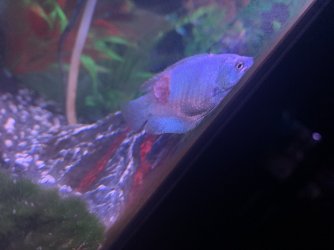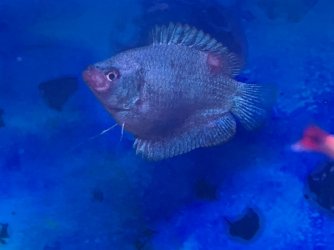Hi,
I’m having an issue and I am scared for my fish. A week ago these fleshy white spots appeared on my female dwarf gouramis. They share the 80L tank with a single male dwarf gourami and a shrimp. The tank is kept at a nice 24 degrees Celsius and I clean the tank every week and do a 30% water change every time with some stress coat added. Ammonia levels have almost always been 0 and I have had the tank for 8 months and these fish for 6 months. I also keep a few small live plants in there and some moss balls.
Now that all of that is out the way... They started slightly smaller and whiter but now they seem to be getting bigger and redder... Are they bites from fighting which have gotten infected?? Some kind of bacterial infection? The male is completely fine, could he be attacking them? And of course the most important question: Will they live?
Thank You and I hope someone can help...
I’m having an issue and I am scared for my fish. A week ago these fleshy white spots appeared on my female dwarf gouramis. They share the 80L tank with a single male dwarf gourami and a shrimp. The tank is kept at a nice 24 degrees Celsius and I clean the tank every week and do a 30% water change every time with some stress coat added. Ammonia levels have almost always been 0 and I have had the tank for 8 months and these fish for 6 months. I also keep a few small live plants in there and some moss balls.
Now that all of that is out the way... They started slightly smaller and whiter but now they seem to be getting bigger and redder... Are they bites from fighting which have gotten infected?? Some kind of bacterial infection? The male is completely fine, could he be attacking them? And of course the most important question: Will they live?
Thank You and I hope someone can help...



